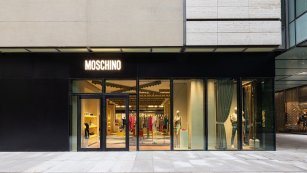Inditex Stumbles: Five Key Pressures Driving Slowdown
The Galician group that owns Zara has started fiscal 2025 with a weak increase in sales and a flat net income performance. The group keeps gross margin under control, but has challenges ahead.


Inditex starts 2025 on the wrong foot. The Galician company, the world's largest fashion retail group, ended the first three months of the year below forecasts, a period marked by a sales increase of only 1.5% and an almost flat profit performance. Growth, currencies, cash, stock and suppliers are the five keys to Inditex's first quarter, which also has the positive note of the gross margin, which is maintained compared to the same period of 2024.
2025 is Inditex's first fiscal year with a new corporate structure. At the end of the first quarter (February to April), the company announced in mid-May the creation of a corporate general management team, headed by Ignacio Fernández Fernández, who reports to the CEO, Óscar García Maceiras. In addition, the company appointed Andrés Sánchez Iglesias as CFO.
With a new structure, Inditex faces the challenge of turning around its performance for the rest of the year, with the spotlight on five elements in a context of instability that is not at all favorable for fashion, both for its impact on the supply chain and for how it affects consumers. Although the stock market has been tough on Inditex in its latest results presentations, the group's fundamentals are performing better than those of its major competitors.
Inditex faces the challenge of turning around its performance with a new corporate structure.
Growth, pressure from comparables
When Marta Ortega took over the chairmanship of Inditex, she announced that the game was no longer about growth, but about becoming more profitable. Since the beginning of 2023, the Galician group has left behind double digits to single digits, reaching in the first quarter the lowest pace since 2018 in a comparable period. Another of the Galician empire heiress' guidelines has to do with its strategy of boosting sophistication and raising the positioning of its brands. The challenge is twofold: to maintain the relevance and meaning of its proposals, while justifying its prices by improving the qualitative perception of the products, closely linked to sustainability plans.
However, the consolidation of this strategy is progressing at a slower pace than usual in the Arteixo-based company's history. Zara, the largest chain by turnover, is now a more desirable brand and enjoys greater creative legitimacy from the industry than a few years ago, but its growth is slowing down in contrast to the margin of other chains. In the first three months of the year, the company's flagship was also the one with the most store closings, with 52 net closings out of the 136 that the group carried out in total.
Although the company does not detail the turnover figures of the formats in the first quarter, Zara increased its turnover by 6.6% in the last fiscal year. Its performance was then only superior to that of Pull&Bear, which increased its sales by 4.6%. In 2024, the leading format with the best pace for the company was none other than Stradivarius, which increased its sales by 14.1%, along with the small Oysho, which recorded an increase of 11.8%. In fact, the weight of Zara's sales in Inditex's global turnover is shrinking year after year, from 73% in 2022 to 71.9% last year, in favor of the progressive increase in the prominence of other formats.
At the conference with analysts following the presentation of first-quarter results, Maceiras himself yesterday highlighted the dynamism of young chains such as Bershka and Pull&Bear, where the soft tag technology already implemented at Zara is being deployed.
Inditex is thus facing a new crossroads to moderate the slowdown of its star brand, which has already broken all records. The promotion of other formats or the renewed commitment of Lefties, whose figures are consolidated in Zara's sales, are announced as possible alternatives in the search for a new balance.
The group's growth slows down from the beginning of 2023, partly due to Zara's slower growth.
Currencies, the destabilizing element
Currencies are another of the determining factors in Inditex's sales performance. In any case, even discounting their impact, the group's growth has weakened. In the first quarter of 2025, sales at constant exchange rates grew by 4.2%. Adjusting for the calendar effect of the leap year, this growth was 5.3%, which continues to be in single digits.
The depreciation of the dollar and the appreciation of the euro is impacting the results of Inditex, which is highly exposed to currency fluctuations due to the international nature of both its sourcing and sales.
The company, which operates in 216 countries around the world, has already indicated that at current exchange rates it anticipates a negative currency impact of 3% for the whole of fiscal year 2025.
Tariffs, the war with collateral victims
In the face of the announcements of various international groups, Inditex has opted for its characteristic prudence when facing the storm caused by the uncertainty of international tariff policy. "We are used to very different tariff regimes," said the CEO last March, calling for calm and assuring that Inditex has extensive experience and a good position to deal with geopolitical uncertainty.
Thus, Inditex did not announce specific measures or price increases to mitigate the possible impact of tariffs in the United States. Nor was starting production in the country presided over by Donald Trump on the roadmap. However, projects in its second-largest market by sales volume, behind only Spain, have inevitably become more complicated since the start of the trade war. The U.S. market has lost its golden aura, which it enjoyed after the post-pandemic resilience, and current strategies are not free of risks, uncertainty and revised expectations.
"The current environment is difficult to foresee, so we monitor it constantly," said Gorka García-Tapia, director of investor relations, on Wednesday, arguing that Inditex has "three key tools to deal with changes in tariff regimes": the global presence that brings experience in change management, the diversification of sales and sourcing, and the flexibility of the model.
The company has confirmed that "normal operations" are continuing, highlighting the recent move of Zara's flagship store from Los Angeles to The Grove and an opening in Boston.
Stock, enemy number one
The Covid-19 crisis put to the test Inditex's business model, which, quarter after quarter, managed to keep its purchases below or in line with the evolution of its sales, while keeping its stock in order. Although Inditex's margin remains under control for the time being, the increase in stock usually leads to high promotional activity, which impacts profitability.
The group ended the first quarter of 2025 with stock valued at €3,791 million, compared to €3,566 million in the same period of 2024, up 6.3%. This increase is four times higher than the increase in turnover.
The company closed the period with a stock equivalent to 45.8% of its quarterly turnover, compared with 43.8% in the same period of the previous year. Since 2020, the group had managed to reduce, year after year, the weight of stock in year-end sales, from 11.4% in 2020 to 8.3% in 2023 and 8.6% in 2024.
Like the bulk of its competitors, the weather has played against Inditex's sales in the first quarter of its fiscal year, when the spring-summer season begins, a start that has been marred by cold and rain in markets such as Spain. It remains to be seen whether international geopolitical instability is also affecting the buying mood.
Cash and creditors, where is the debt?
When analyzing Inditex's finances, one of the most remarkable elements is the absence of bank indebtedness and the high cash flow. Although in the first quarter this picture has not changed, Inditex's balance sheet in the first quarter leaves some traces of deterioration.
On the one hand, the company has reduced its net financial position (cash and short-term financial investments) by 7.3% compared to April 30, 2024, to 10,778 million euros.
In addition, the Galician group has increased its main liability: current debt with creditors. Commitments with creditors (mainly suppliers) rose by 3.1% year-on-year at the end of the first three months of 2025, from 10,126 million euros to 10,443 million euros.

















